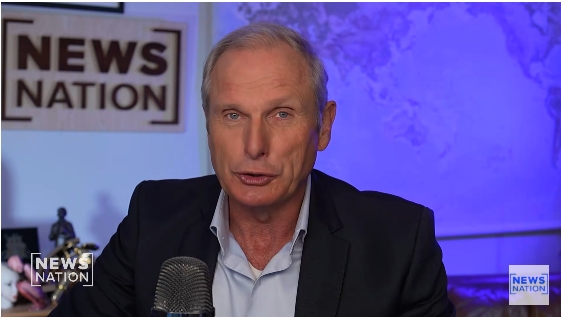
The Tedesco brothers—John and Gerry—alongside journalist and researcher Donna Lee Nardo, sat down with NewsNation's special correspondent to discuss three extraordinary encounters they've documented off the coast of New York. What makes their work particularly compelling isn't just what they've captured on camera, but how they've done it: with scientific rigour, peer-reviewed methodology, and equipment that would make most university research departments envious.
The July 5th Incident: A Sphere That Shouldn't Exist
The first encounter John Tedesco described was nothing short of bizarre. On July 5th this year, the team observed something approximately 600 feet above the Atlantic Ocean's surface. Initially, it appeared as a low-luminosity object, barely registering on their infrared sensors but showing some visible light. Then, in what can only be described as a proper head-scratcher, the object vanished—only to reappear moments later as an "extremely bright, luminous sphere" on the water itself.
Here's the kicker: "This was invisible to the eye, and completely invisible," Tedesco explained. The object was only detectable through their hyperspectral cameras—sophisticated equipment capable of capturing light spectrums beyond human perception. It's the sort of thing that makes you wonder what else might be floating about that we simply can't see.
Who Are These People, Anyway?
Before we dismiss this as another "trust me, bro" UFO story, it's worth noting the credentials behind Nightcrawler Research. John Tedesco is a laboratory engineer with multiple master's degrees, specialising in instrumentation and electrical engineering. His brother Gerry brings equally impressive engineering expertise. They're not weekend hobbyists with binoculars—they've invested substantial personal savings into creating what amounts to a mobile scientific laboratory.
Their research platform, affectionately dubbed "the Nightcrawler," is a modified RV bristling with advanced technology: hyperspectral imaging systems, millimeter-wave radar, thermal sensors, FLIR cameras, acoustic detectors, and environmental monitoring equipment. They've collaborated with Harvard's prestigious Galileo Project and published peer-reviewed research in Scientific Research, lending considerable academic weight to their work.
What started as an investigation into cancer clusters on Long Island—prompted by the loss of friends—evolved into something far stranger when their environmental monitoring equipment began picking up anomalous aerial phenomena near JFK International Airport's flight paths.
The Black Triangle and the Morphing Objects
The other two incidents the team discussed with Coulthart were equally perplexing. One involved what they described as a black triangular object exhibiting unusual flight characteristics. In another case, they captured footage of an object that appeared to move in and out of the water—behaviour that defies conventional explanation for any known aircraft or drone technology.
The team also addressed the mysterious drone wave that spooked residents across New York and New Jersey earlier this year. Intriguingly, they reported that several of these objects were "virtually impossible to see" even with infrared technology when they switched off their lights. Using their full-spectrum cameras, the Tedescos discovered these craft weren't actually going dark—they were simply shifting the frequency of their lights beyond visible and standard infrared ranges.
It's precisely this sort of detailed technical observation that sets Nightcrawler Research apart from typical UAP sightings you might read about online. They're not just filming blurry lights and calling it a day; they're collecting electromagnetic data, measuring atmospheric interference, and documenting how these objects affect their recording equipment.
The FBI Is Listening
When Coulthart pressed the team about whether federal agencies were taking their reports seriously, John Tedesco's response was unequivocal: "Absolutely. It's an ongoing thing with them. They're certainly very concerned about it. And, you know, our communication, it's been ongoing."
"It's an ongoing thing with them. They're certainly very concerned about it. And, you know, our communication, it's been ongoing."
That's not PR spin—law enforcement has actively consulted the Tedescos on multiple occasions. They were summoned to Francis Gabreski Airport on Long Island during a spate of drone sightings, and they've shared their documented cases with federal investigators. The fact that the FBI maintains regular communication with the team suggests their data is being taken rather more seriously than the typical UFO report filed by enthusiastic sky-watchers.
The Disclosure Context
This comes at a fascinating moment in the broader UAP conversation. Following whistleblower David Grusch's explosive claims about alleged crash retrieval programmes—claims Coulthart himself helped bring to light—there's been renewed pressure for government transparency regarding UAPs. The Pentagon has acknowledged that many reported phenomena remain unexplained, and Congress has held multiple hearings on the subject.
What the Nightcrawler team brings to this discussion is something critically important: repeatable, documented evidence collected using scientific methodology. Their work bridges the gap between anecdotal reports and serious scientific inquiry—the sort of approach that could actually move the needle on understanding what these objects are.
What Happens Next?
The Tedescos and Nardo continue their research along the Atlantic coast, expanding their observation network and refining their detection capabilities. They're actively seeking funding to maintain their "boots on the ground" approach and keep their subject matter expert network operational. Their goal isn't just to capture more footage—it's to build a comprehensive data set that might finally answer some of the questions that have plagued UAP research for decades.
Whether these objects represent advanced human technology, natural phenomena we don't yet understand, or something more exotic remains to be seen. But one thing's certain: the Nightcrawler team's methodical, data-driven approach is precisely what the field needs more of.
As Coulthart's interview makes clear, we're not dealing with fuzzy iPhone videos and excited speculation here. We're looking at professionally documented anomalies that have caught the attention of federal law enforcement. And that, frankly, is worth paying attention to—regardless of where you sit on the "are we alone?" question.
